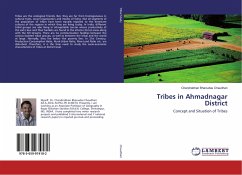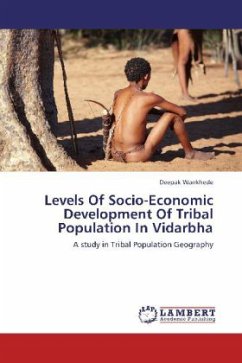Tribes are the ecological friends. But, they are far from homogeneous in cultural traits, social organization and modes of living. Not all segments of the population of tribes have been equally exposed to the dominant cultures of the re gions in which they are living today. In India, different tribal groups are also living in inhospitable terrain where productivity of the soil is low and their hamlets are found in the interior forest areas along with the hill streams. There are no communication facilities between the various isolated tribal groups, as well as between the tribal and the world at large. Normally, they live below the poverty line. In 21st Century, Production-Consumption Ratio, Rural-Urban Ratio, Man-Land Ratio etc. are disturbed. Therefore, it is the time need to study the socio-economic characteristics of tribes at district level.
Bitte wählen Sie Ihr Anliegen aus.
Rechnungen
Retourenschein anfordern
Bestellstatus
Storno








